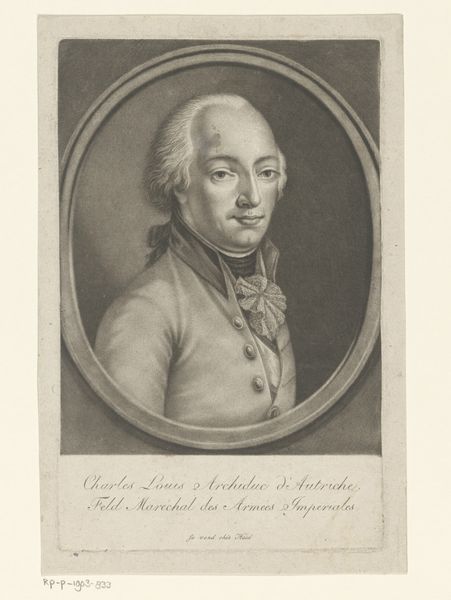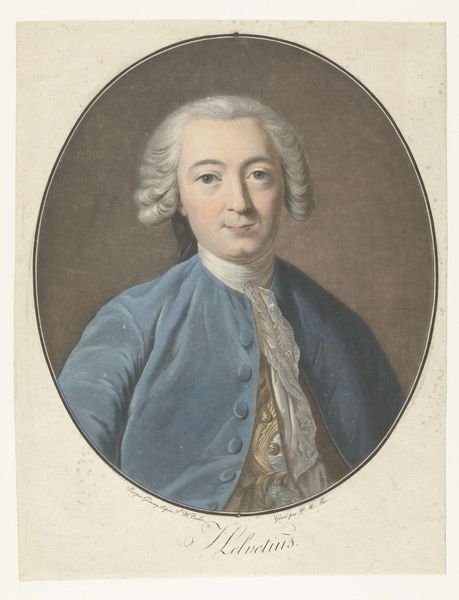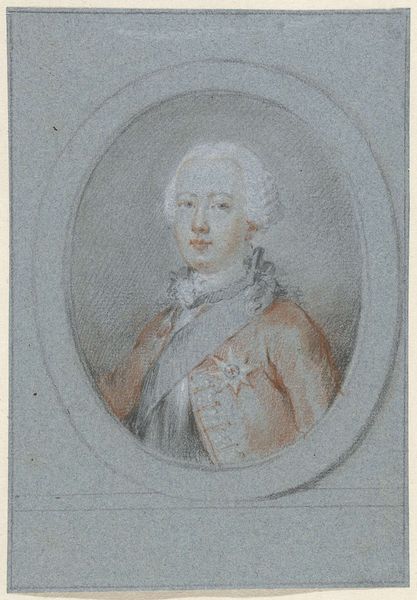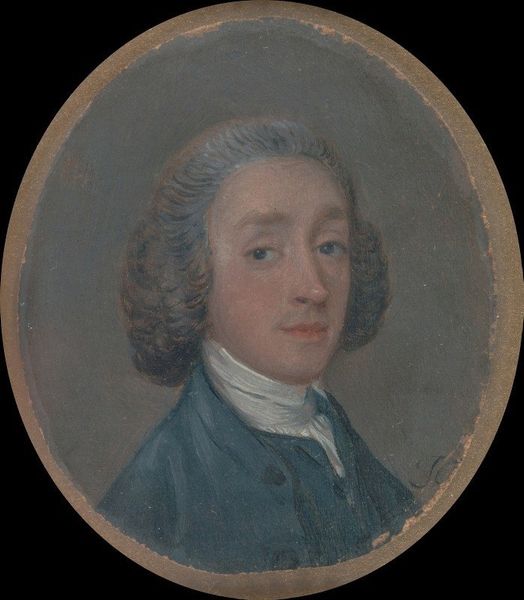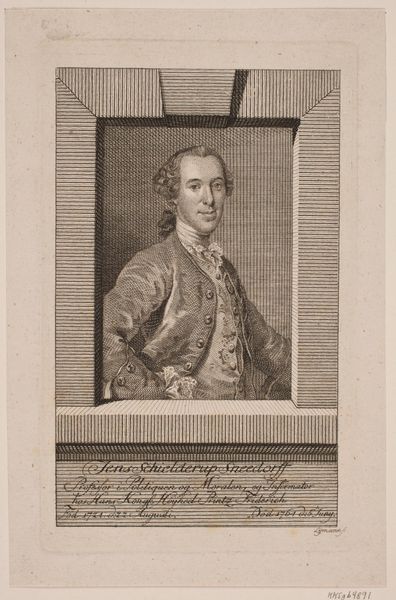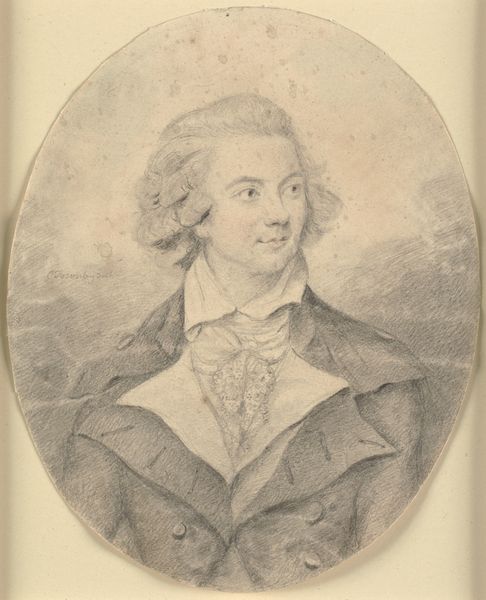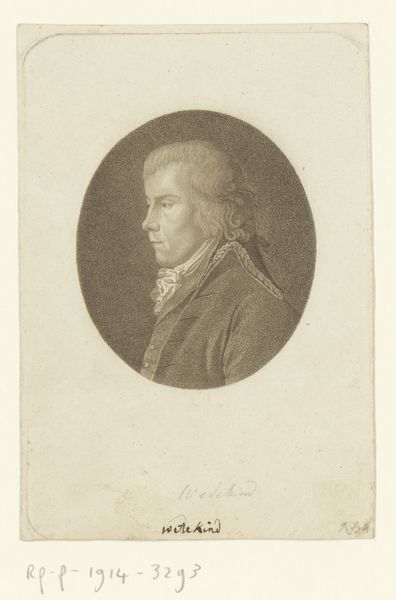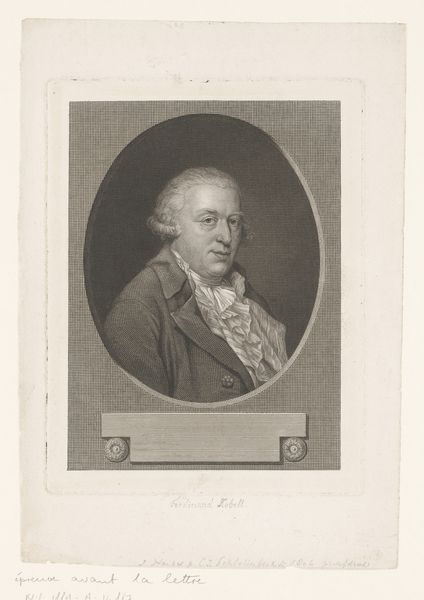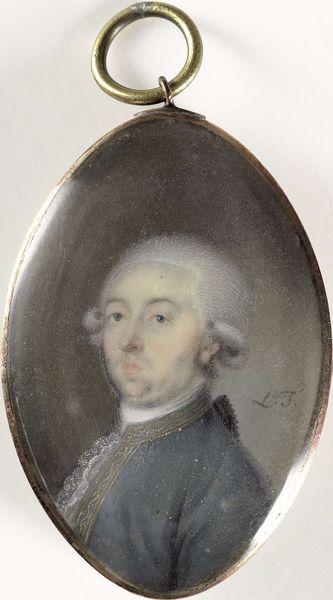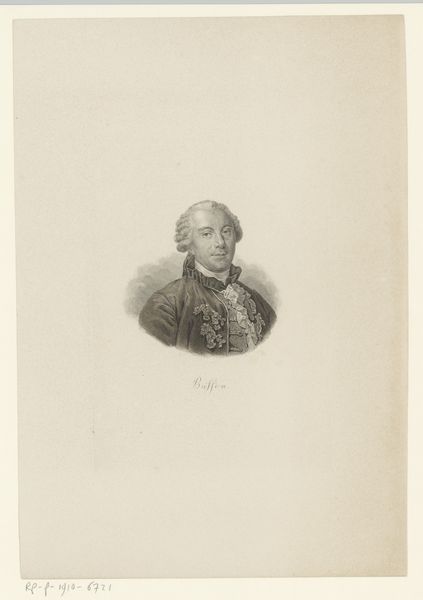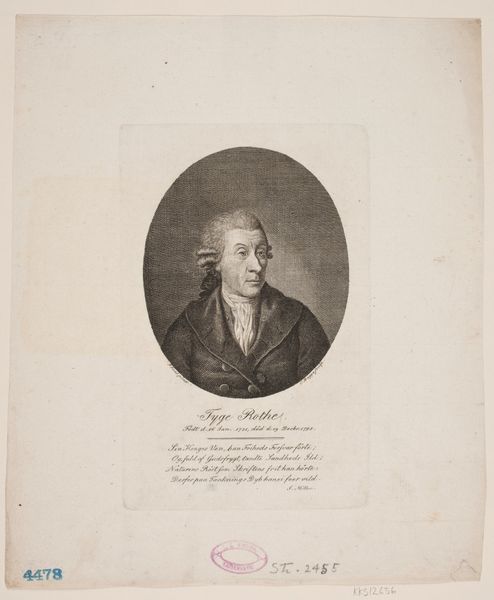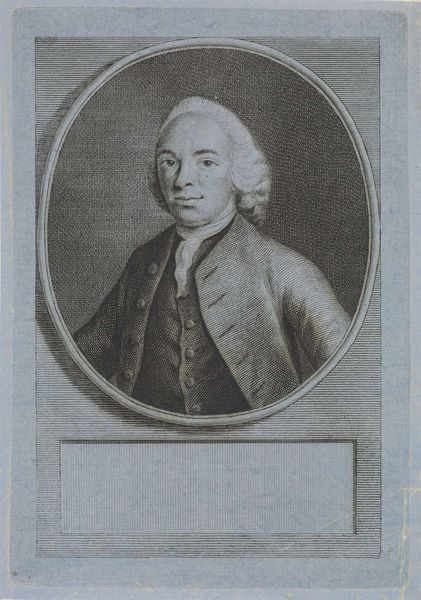
drawing, paper, chalk, graphite, charcoal, pastel
#
portrait
#
drawing
#
charcoal drawing
#
paper
#
charcoal art
#
chalk
#
graphite
#
genre-painting
#
charcoal
#
pastel
#
academic-art
#
charcoal
#
watercolor
Dimensions: 275 × 220 mm
Copyright: Public Domain
Editor: Here we have Hugh Douglas Hamilton's "Portrait of a Man," created around 1770. It looks like it was made using charcoal and chalk on paper, and I'm immediately drawn to the contrast between the dark background and the almost luminous quality of the figure. What stands out to you, Professor? Curator: The tension established between line and tone is quite compelling. Notice how Hamilton uses hatching and cross-hatching to build up the tonal values in the background. Where does the subject begin, and the void end? Editor: You're right, it almost feels like the figure is emerging from the darkness, and Hamilton has managed to convey so much texture with what looks like such delicate materials. The subtle gradations in tone are especially effective in defining the planes of the face and the folds of his garment. What does this portrait say beyond its face value? Curator: If we focus on Hamilton's use of line, we see how he defines form and also suggests movement, particularly in the hair. Semiotically, the lines are vectors pointing the viewer's eye throughout the piece. Note also the precise oval of the portrait contrasting against the free rendering style: What implicit statement is being made through these arrangements? Editor: That’s fascinating! The lines and their movement really bring out the character. And framing this against free rendering introduces this tension to the subject matter of the painting, of a person and its individual rendering versus the subject of art and visuality, that I would not have appreciated if you didn’t highlight it. Curator: Exactly. Through careful examination of composition, tone, and form, we uncover layers of meaning embedded within what initially appears a simple portrait. Editor: It makes me think about portraiture in a completely different way. Thanks so much for sharing your insights!
Comments
No comments
Be the first to comment and join the conversation on the ultimate creative platform.
